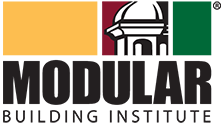Inflation Comes in Hot to Begin '24

Anirban Basu is the Chairman & CEO of Sage Policy Group and Chief Economist of the Modular Building Institute.
Last year was a shockingly good one for the U.S. economy, at least relative to expectations. Coming into 2023, the conventional wisdom was that near-term recession was inevitable in America. In the face of belligerent excess inflation (above the Federal Reserve’s 2 percent mandate), monetary policymakers began ratcheting interest rates higher in March 2022. That process continued throughout the balance of the year and into 2023. At least partially as a result, equity markets sustained large losses in 2022 as corporate borrowing costs soared.
All of this was viewed as precursors to a broader economic downturn. The high-powered economists at Bloomberg maintain a forecasting index that suggested that the probability of recession in America as of October 2022 was 100 percent.
Instead, America had a fine year economically even as Europe flirted with recession, Japan entered one, and as China languished. During 2023’s initial quarter, the U.S. economy expanded 2.2 percent on an annualized basis. The following quarter, growth ticked lower to 2.1 percent, suggesting to some that perhaps a recession was forthcoming during the back half of the year. Instead, the economy rallied, expanding at an unpredicted 4.9 percent during the third quarter and 3.4 percent during the fourth. For the year, the economy expanded 2.5 percent. If one compares the fourth quarter of 2022 to 2023’s fourth quarter, output grew an even more impressive 3.1 percent.

Anirban Basu speaks at the Modular Building Institute's annual World of Modular conference.
The outperformance of the economy coupled with breathless anticipation of Federal Reserve rate cuts pushed equity prices higher last year. The tech-laden Nasdaq expanded an eye-popping 43 percent, while the S&P 500 returned 24 percent and the Dow Jones 13 percent. Rate tightening ended with a quarter point rate increase on July 26th, 2023. Investors have been waiting for the renewal of monetary accommodation ever since. Alas, they may have longer to wait.
In June 2022, as supply chains struggled to normalize and as consumers were amid a spending spree, prices rose with especial rapidity in the context of widespread scarcity. During the one-year period ending June 2022, economy-wide inflation peaked at a 40-year high of 9.1 percent. But as supply chains improved thereafter and direct federal subsidies to households and businesses faded, inflation edged lower. By January 2024, year-over-year inflation was down to 3.1 percent according to the Consumer Price Index (CPI). If one engages in simple extrapolation, the Federal Reserve’s target rate of 2 percent must be right around the corner.
It is never so simple. The January data came in a bit hotter than expected. Many economists had predicted that the year-over-year inflation would have dipped below 3 percent. By March, overall inflation according to the CPI was back to 3.5 percent year-over-year. The core rate of inflation, which excludes food and energy prices, stood at 3.8 percent. Another measure, the core PCE deflator, a measured favored by Federal Reserve policymakers, was up 2.8 percent on a year-ago basis in February. In short, achievement of the 2 percent inflation target remains elusive.
Coming into the year, many investors anticipated in the range of six quarter-point rate cuts by the Federal Reserve. The first one was set to occur in March. That meeting has come and gone, and there has been no movement on rates.
In an April CNN article, Greg McBride, the chief financial analyst at Bankrate, said, “You can kiss a June interest rate cut goodbye.” The article also noted that the markets’ probability of a rate cut in June declined from 73 percent in March to just 21 percent as of April 10th, a reflection of the extent to which higher-than-expected inflation has surprised bond and other traders.
There are many implications, including the fact that mortgage rates are no longer declining. The result is that mortgage applications, a leading indicator of home sales, continue to be substantially below the 2021 cyclical peak. Nonetheless, home prices remain elevated since many homeowners have refinanced to ultra-low mortgage rates and choose not to sell the homes to which they are attached presently. Among those who suffer because of such dynamics are realtors (lack of transactional volume) and title agents (ditto).
The obvious question is why inflation is returning. As has been reported in recent months, wage pressures remain abundant; so much so that 2 percent inflation remains unlikely in the near-term. As of February, there were 8.8 million available, unfilled jobs in America. In March, the nation’s rate of unemployment fell to 3.8 percent. With so many job openings and so few people to fill them, wage pressures remain firmly in place.
But that is not where the causation story ends. A sea of newly emerging supply chain issues has emerged, including those involving Houthi rebels, Somali pirates, water levels in the Panama Canal, supply chain relocation, including from China to the U.S., Baltimore’s Francis Scott Key Bridge collapse and others. Each of these is conspiring to drive up costs, whether in the form of massive increases in maritime insurance or lengthier distances to travel.
As reported by Reuters (February 7th, London), certain underwriters have raised the premiums they charge to American, British, and Israeli firms by as much as 50 percent for ships transiting the Red Sea. As stated in a Reuters report from earlier this year, “This translates into hundreds of thousands of dollars of additional costs for a seven-day voyage.”
The Baltic Freight Index serves as a barometer for shipping costs by reflecting the price of transporting goods across the world. In 2020 and 2021, the index experienced substantial volatility. During peak recovery, the index rose more than 300 percent during a period of massive growth in the demand for goods and concomitant port congestion and container shortages. Prior to 2020, the average index value was in the range of 1,000, but that figure expanded to more than 4,000 by mid-2021. This is in fact the period during which inflation was at its most rampant, though the Federal Reserve did nothing to increase interest rates that year.
Since 2022, the index has trended downward as supply chains normalized or roughly so. Logistics improved and bottlenecks became less of an issue. By the end of 2023, the index had dipped in value to approximately 2,500. The decline reflected greater supply chain reliability, including the availability of diversified/alternative shipping routes and expanded investment in infrastructure. More recently, events both globally and domestically have restored volatility to the index.
More from Modular Advantage
Samantha Taylor: Leading the (Modular) Design of Tomorrow
“With modern technology and the way we’ve all embraced things like BIM, file sharing, and video conferencing since COVID, it’s easy to collaborate with companies in Austria, or Singapore, or anywhere else in the world.”
Greg DeLeon: Military Engineering to Modular Design
Greg DeLeon, a structural engineer at ISE Structural Engineers in Temecula, California, can tell you not only how large a beam needs to be to support a house, but also how much explosives you’ll need to take it down, thanks to his unique combination of professional and military experience.
To Remake North Minneapolis, Devean George Swaps Basketball for Buildings
He’s lived in Los Angeles, Dallas, and San Francisco (to name a few). He’s delivered championships with the Los Angeles Lakers and made career-defining moves with the Dallas Mavericks and the Golden State Warriors. No matter the wins, the championships, or even the seemingly impossible 3-pointers, Devean George has always returned to where it all started for him: Minneapolis.
Chelsi Tryon: Making the World a Better Place
For Chelsi Tryon, Director of Environmental, Social, and Governance (ESG) for WillScot Mobile Mini, nothing is more enjoyable than increasing the
company’s sustainability efforts while simultaneously doing her bit to save the environment.
Joshua Hart: Pushing Boundaries
Joshua Hart, P.E., vice president at Modular
Solutions, can sum up his job responsibilities in one sentence: “I do whatever needs to be done.” Hart thrives on the variety and the opportunity to be involved in every aspect of the company. And it shows! You might say Hart has come full circle.
Jamie Metzger: From Construction to Apparel and Back Again
Growing up in a blue-collar city like Edmonton, Alberta, Canada, it’s no surprise that Jamie Metzger spent some time working labor jobs on construction sites. It’s one of the most common summer jobs in the city. But that’s probably the last predictable thing about this particular story.
Victor Masso: Expanding Modular in Puerto Rico
Victor Masso joined 2 Go Storage, a company started by his grandfather and father, in 2018 to develop a modular building division in the wake of the devastation caused by Hurricane Maria in 2017. Prior to joining the company, he had worked in the industry for about four years focusing on pharmaceutical, commercial, and government projects.
Eliyah Ryals: Finding the Perfect Fit
It’s not common for people to find their perfect career fit straight out of college. It’s even less common to find it in the town you grew up in. But that’s exactly what happened when Eliyah Ryals was told about vacancies at Panel Built and made the decision to apply.
Through It All, It’s Still About the Workers
By February 2024, the number of available, unfilled construction job openings had reached an all-time high. At some point, interest rates will fall, creating another surge in demand for such workers. In short, solving the nation’s skilled worker shortage issue has never been more important.
Navigating Insurance Challenges in the Modular Construction Industry
Utilizing practical written minimum insurance and indemnity requirements, along with monitoring certificates of insurance by someone who has COI training will not yield a perfect risk transfer strategy, but the exposure will be managed much better than it likely is currently.










